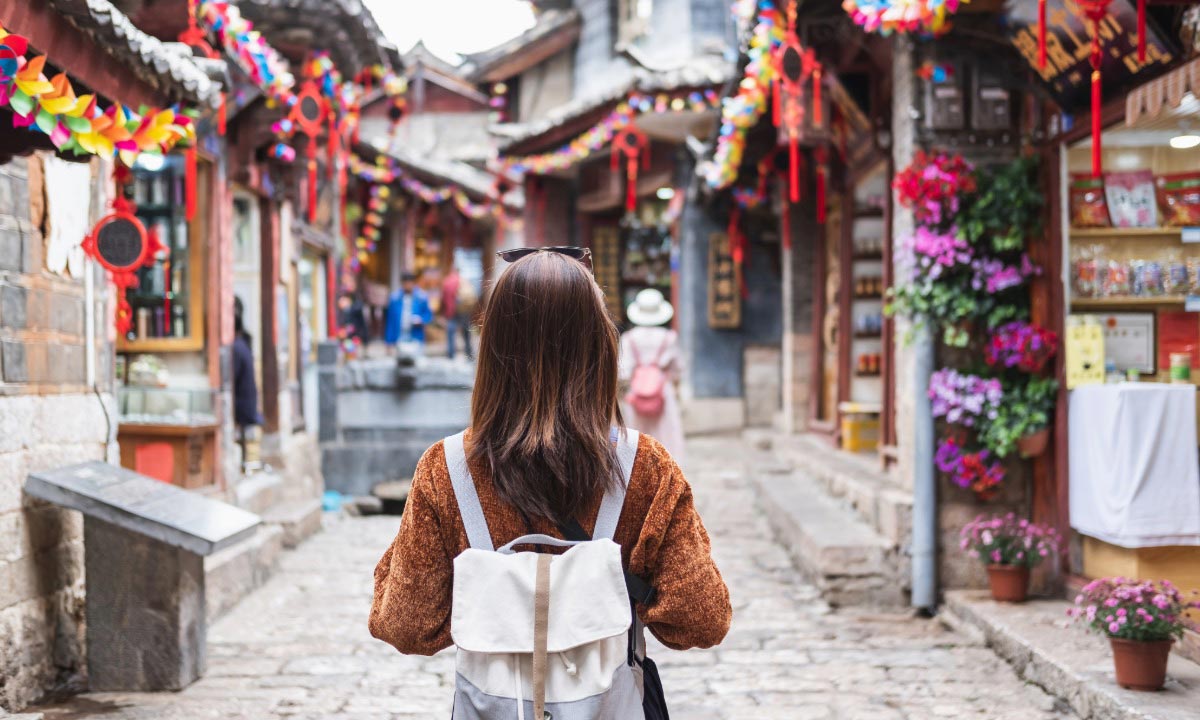
Travel is a process of knowing new lifestyles, exploring tales that were written on time and reaching out to the soul of a destination. This is where cultural tourism comes in. Cultural tourism enables the tourist to take a particular spot and explore the lifestyle, the history, the art and the heritage of the location and make the otherwise ordinary trip into a rich adventure. Cultural tourism has become one of the most essential modes of travel in the ever-globalized world and it promotes understanding, appreciation and preservation of our common human heritage.
What Cultural Tourism is and Why Does it Matter?

Cultural tourism is a kind of tourism whose main reason is the hope to experience and get to know the culture of a certain place. Tourism includes seeing history, places of interest, arts, buildings, cuisine, rituals and traditions. Cultural tourism in contrast to mass tourism which is usually concerned with relaxation, or entertainment, concerns itself with an important interaction with the host lifestyle.
This type of tourism is very important in the current travel sector because of the following reasons:
- Fosters Cross-Cultural Understanding: Travelers learn to embrace empathy, tolerance, and respect towards differences by going through different cultures.
- Promotes Sustainable Economic Development: Cultural sites and events attract tourists and generate employment and boost local economies.
- Conserves Cultural Heritage: When the tourists appreciate cultural heritage, then more effort will be made to preserve and rebuild monuments, arts and traditions.
- Adds to Personal Development: Cultural tourism is an educational experience and emotional attachment hence travel becomes more meaningful.
As the world tourism sector recovers fast after the pandemic, cultural tourism is likely to take a key role in defining how we explore the world in a responsible and sustainable manner.
What are some ways Tourism assists in Heritage Preservation?

Tourism is regarded as a two sided sword, where on the one hand, it will be economically beneficial, on the other side it may lead to the destruction of delicate heritage. Tourism however can be a potent tool in the conservation of heritage when it is done in a responsible manner. Here’s how:
- Financial support: Entrance charges, heritage taxes and cultural grants with tourism income are usually directly invested in the upkeep and renovation of historical sites, museums and cultural centers.
- Enhancing Cultural Awareness: Travelers that want to experience a genuine depiction of culture will motivate them to respect and admire the communities they visit in terms of their culture, language, and craftsmanship. This will ensure that these cultural aspects are preserved to the new generations.
- Promoting Traditional Practices: Tourism generates demand for traditional handicrafts, performances and food and earns local artisans and performers sustainable livelihood. This economic gain will aid in maintaining skills which would be lost otherwise.
- Promoting Government Protection: This is encouraging because popular tourist interest can compel governments to declare sites as protected monuments, or even apply to the UNESCO World Heritage as a way of protecting them much better.
Cultural tourism when done well is a process of appreciation and preservation and this way, there will be a future where whatever people stress on today will be there tomorrow.
Cultural Tourism Examples

Cultural tourism may look in any form, whether it is exploring ancient ruins, viewing traditional festivals, walking through ancient towns, or even in the family of the locals. The following are some of the classic cultural tourism sites across the world:
- Machu Picchu, Peru: The Incan citadel located high in the Andes is an impressive piece of ancient technology and spirituality. The Inca trail is visited by tourists who get to experience centuries old rites, and traditions, which are still in practice in nearby villages.
- Angkor Wat, Cambodia: This magnificent temple complex is the largest religious monument in the world and it represents the Khmer art and architecture of the 12th century and is closely connected to the identity of Cambodia.
- Kyoto, Japan: Kyoto is considered the cultural core of Japan with centuries old Buddhist temples, Shinto shrines, tea ceremonies, geisha culture and seasonal festivals such as Gion Matsuri.
- Jaipur, India: The Pink City boasts of royal palaces, grand forts, colorful bazaars and the rich Rajasthani culture and is known to be the backbone of the Indian cultural tourism circuit.
- Varanasi, India: Developed as one of the oldest inhabited cities in the world, Varanasi is a spiritual center of the Ganges, where every day, rituals, aarti ceremonies, and centuries of culture are in an awe-inspiring harmony.
The destinations are not merely viewpoints as they are living cultural landscapes where the past and heritage are a way of life.
The Cultural Tourism in India

India is one of the few countries that could be compared with in terms of cultural tourism. India is the heaven of culture travelers with thousands of years of history, dozens of languages, hundreds of festivals, and a fantastic variety of art forms.
These are just but a few ways in which cultural tourism is successful in India:
- Historic Monuments and Architecture: The Taj Mahal in Agra, the Khajuraho temples, the ruins of Hampi, the forts of Rajasthan, the monuments of India have a tapestry of the history of many different dynasties, religions, styles of art.
- Spiritual Tourism: India is the birth place of Hinduism, Buddhism, Jainism and Sikhism. The spiritual solace and cultural education of millions of people is attracted to pilgrimage sites such as Varanasi, Bodh Gaya, Amritsar and Rishikesh.
- Festivals and Fairs: Diwali, Holi, Durga Puja, Pushkar Fair and a million regional festivals provide travelers with a colorful experience of living in India in its traditions, music, dance and cuisine.
- Folk Arts and Handicrafts: Gujarat- Traditional weaving, Madhubani painting, Kerala Kathakali dance and while there are gharanas of classical music all over the country, they provide a cultural experience.
- Culinary Tourism: Indian cuisine is a cultural adventure on its own, and each area has its unique taste, traditions and history of culinary.
India is a good example of how cultural tourism may be used to celebrate diversity and yet at the same time promote unity which has provided tourists with a memorable experience of living heritage.
Challenges of Cultural Tourism

As much as cultural tourism is of great benefit, it is also associated with major challenges. The identification and resolution of these are important in making sure that cultural heritage is not used, but instead preserved. Major Challenge are:
- Over-Tourism: There is potential physical damage, pollution and pressure on local infrastructure as a result of too much traffic on the heritage sites.
- Commercialization: The commercialization of cultural practices can only diminish the authenticity and meaning of the practices when they are turned into performances to be enjoyed by the tourists.
- Cultural Misappropriation: The disrespect to local communities can be caused by the misinterpretation or inadequately sensitive representation of traditions.
- Destruction of the Local Control: In a scenario where the tourism industries are overtaken by foreign companies, the local people might not fairly enjoy their own heritage.
Responsible Practices and Solutions

- Sustainable Tourism Policies: Governments and organizations should reduce the number of visitors, develop conservation strategies, and control business operations at heritage sites.
- Community Involvement: The traditions can be preserved in a way that makes sure that a community participates in tourism and becomes economically dependent on it.
- Traveler Education: Tourists should be encouraged to study cultural manners, patronize local industries and not to interfere with sacred places to promote ethical tourism.
- Certification and Recognition: Programmes such as UNESCO World Heritage designation or sustainable tourism certifications can guarantee that the development of tourism is in line with the conservation of the heritage.
Conclusion
In conclusion, it is the balance between conservation and commercialization that will see cultural tourism prosper in the future as communities will be given a chance to flourish and conserve what makes them special.
At a time when traveling has become shallow and commoditized, cultural tourism is a way of returning to the spirit of exploration. It makes trips into learning, sympathy, and trade. Through heritage, tourists can be its guardians not merely observers of its existence.
Cultural tourism offers a means of commemorating our past whilst trying to manoeuvre the future since climate change, globalization, and modernization transform our world. It implores us that what is special about each place is its culture and that culture is worth preserving.
When we decide to travel, we visit cultural tourism to be curious and conscious about the things that we love to see and hear today in a manner in which the stories, traditions, and treasures in our lives become a lasting legacy to future generations.
FAQs on Cultural Tourism







